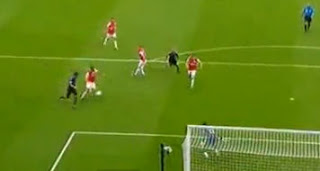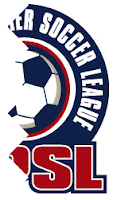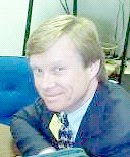This blog was created to identify bad commentary by American announcers. But this post is about an announcer of an EPL match. Not my usual target, but here I go anyway.
On August 20th, Arsenal lost to Liverpool 2 to 0. The first goal was an own-goal by Arsenal in the 78th minute. Liverpool's Luis Suarez (#7) was in an offside position when the ball was passed to him by teammate Raul Meireles (#4), but Arsenal's defender Ignasi Miquel (#49) played it first - good defending. The problem for Arsenal occurred immediately afterwards when Miquel attempted to clear the ball but instead the ball bounced off his teammate Aaron Ramsey (#16) and went into the goal. Suarez continued playing since the initial pass to him was intercepted and there was no flag and/or whistle for offside. Also Suarez did not interfere with Miquel when he intercepted the pass. Suarez definitely did not gain an advantage by being in an offside position. So he was not guilty of infringing Law 11, Offside.
In the picture below Meireles (center, in black) just passed the ball to Suarez (lower left, in black). You can see Miquel (lower left, in red & white) clearly playing the ball before it could reach Suarez. At this point, consideration of an offside offence is finished. What follows is normal play.

But during the replays on ESPN immediately following the goal, Ian Darke stated and asked, "He's offside. Isn't he there?" Following the subsequent kickoff, Ian Darke again stated, "Suarez was offside."
Three minutes later during a substitution and more replays of the own-goal by ESPN, Ian Darke continues by saying, "See. His leg is just offside."
These comments do a disservice to the viewers. It is miseducation, which is why I write this blog: to plead with announcers to learn the laws of the game and stop miseducating listeners.
The first problem with this commentary and discussions of offside in general is the dual use of the work offside. It is one thing to be in an "offside position" but it is another thing to commit an "offside offence." Too often the single word offside is used in both cases. The second problem with this commentary comes from the first sentence in Law 11 which states, "It is not an offence in itself to be in an offside position." Since Suarez did not commit an offside offence, he was only in an offside position for a while. Again, it is not an offence in itself to be in an offside position. But Mr. Darke talks on and on about Suarez being offside. YES! He was in an offside position, but that's all!
So Mr. Darke, please re-read Law 11 so you can better understand and comment on rapid match situations related to offside.
I must add that Steve McManaman understood the situation. Near the end of the match referring again back to the own-goal, he said, "Suarez was offside but he was not interfering with play, is he?" and then declares, "That is not offside." To clarify, since he used the word offside for two different things, what McManaman said was "Suarez was (in an)offside (position) but he was not interfering with play, is he? That is not (an) offside (offense)."
On August 20th, Arsenal lost to Liverpool 2 to 0. The first goal was an own-goal by Arsenal in the 78th minute. Liverpool's Luis Suarez (#7) was in an offside position when the ball was passed to him by teammate Raul Meireles (#4), but Arsenal's defender Ignasi Miquel (#49) played it first - good defending. The problem for Arsenal occurred immediately afterwards when Miquel attempted to clear the ball but instead the ball bounced off his teammate Aaron Ramsey (#16) and went into the goal. Suarez continued playing since the initial pass to him was intercepted and there was no flag and/or whistle for offside. Also Suarez did not interfere with Miquel when he intercepted the pass. Suarez definitely did not gain an advantage by being in an offside position. So he was not guilty of infringing Law 11, Offside.
In the picture below Meireles (center, in black) just passed the ball to Suarez (lower left, in black). You can see Miquel (lower left, in red & white) clearly playing the ball before it could reach Suarez. At this point, consideration of an offside offence is finished. What follows is normal play.

But during the replays on ESPN immediately following the goal, Ian Darke stated and asked, "He's offside. Isn't he there?" Following the subsequent kickoff, Ian Darke again stated, "Suarez was offside."
Three minutes later during a substitution and more replays of the own-goal by ESPN, Ian Darke continues by saying, "See. His leg is just offside."
These comments do a disservice to the viewers. It is miseducation, which is why I write this blog: to plead with announcers to learn the laws of the game and stop miseducating listeners.
The first problem with this commentary and discussions of offside in general is the dual use of the work offside. It is one thing to be in an "offside position" but it is another thing to commit an "offside offence." Too often the single word offside is used in both cases. The second problem with this commentary comes from the first sentence in Law 11 which states, "It is not an offence in itself to be in an offside position." Since Suarez did not commit an offside offence, he was only in an offside position for a while. Again, it is not an offence in itself to be in an offside position. But Mr. Darke talks on and on about Suarez being offside. YES! He was in an offside position, but that's all!
So Mr. Darke, please re-read Law 11 so you can better understand and comment on rapid match situations related to offside.
I must add that Steve McManaman understood the situation. Near the end of the match referring again back to the own-goal, he said, "Suarez was offside but he was not interfering with play, is he?" and then declares, "That is not offside." To clarify, since he used the word offside for two different things, what McManaman said was "Suarez was (in an)







